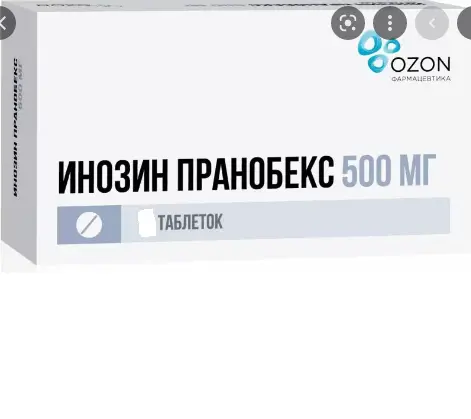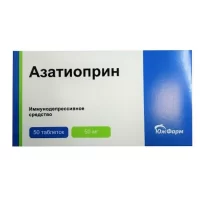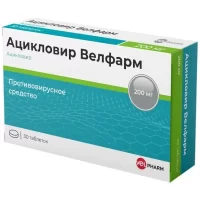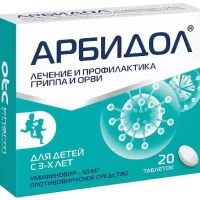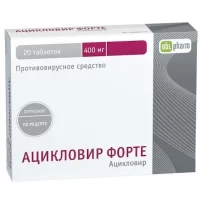Description
Inosine Pranobex Pharmacodynamics
Inosin Pranobeks is a synthetic purine derivative that is a complex containing inosin and N,N-dimethylamino-2-propanol in a molar ratio of 1:3. It has immunostimulatory activity and nonspecific antiviral action. The effectiveness of the complex is determined by the presence of inosine, the second component increases its availability to lymphocytes. It restores functions of lymphocytes under immunosuppression, increases blastogenesis in monocyte population, stimulates expression of membrane receptors on T-helper surface, prevents decrease in activity of lymphocytes under influence of glucocorticosteroids, normalizes thymidine inclusion in them. Inosin pranobex stimulates the activity of T-lymphocytes and natural killer cells, the functions of
T-suppressors and T-helpers, increases production of immunoglobulin G (IgG), interferon gamma, interleukins IL-1 and IL-2, reduces the formation of anti-inflammatory cytokines – IL-4 and IL-10, potentiates chemotaxis of neutrophils, monocytes and macrophages. The drug exhibits in vivo antiviral activity against herpes simplex virus, cytomegalovirus, measles virus, human T-cell lymphoma virus (type III), polioviruses, influenza A and B viruses, human enterocytopathogenic virus (ENV), encephalomyocarditis and equine encephalitis viruses. The mechanism of antiviral action of Pranobex inosine is associated with inhibition of viral RNA and dihydropteroat synthetase involved in replication of some viruses, it enhances the suppressed viral mRNA synthesis of lymphocytes, which is accompanied by reduction of viral RNA synthesis and translation of viral proteins, increases production of alpha and gamma interferons by lymphocytes having antiviral properties. When administered in combination, it enhances the effect of interferon-alpha, acyclovir and zidovudine.
Indications
– Flu and acute respiratory viral infections.
– Infections caused by herpes viruses of types 1, 2, 3 and 4: genital and labial herpes, herpetic keratitis, herpes zoster, varicella, Epstein-Barr infectious mononucleosis.
– Cytomegalovirus infection.
– Severe measles.
– Papillomavirus infection: papillomas of the larynx and vocal cords (fibrous type), genital papillomavirus infections in men and women, warts.
– Subacute sclerosing panencephalitis.
– Contagious molluscum.
Contraindications
– Hypersensitivity to pranobex inosine and other constituents of the drug;
– gout;
– urolithiasis;
– chronic renal insufficiency;
– arrhythmias;
– children under 3 years of age (body weight under 15-20 kg);
– Pregnancy and breast-feeding.
Caution:
Concomitant use with xanthine oxidase inhibitors, diuretics, zidovudine; in acute hepatic failure.
Administration during pregnancy and breast-feeding:
The drug is contraindicated in pregnancy and during breastfeeding, as the safety of use has not been established.
Dosage and administration regimen
- Inosin pranobeks is taken orally, at regular intervals (8 or 6 hours) 3-4 times a day.
The drug is taken after a meal with a small amount of water. The drug dose depends on the patient’s body weight and the disease. - Recommended doses and patterns of administration
Adults and children over 3 years of age (body weight over 15-20 kg): 50 mg/kg of body weight per day (recalculated to the required number of tablets, which is on average 6 to 8 tablets for adults per day, 1/2 tablet for children – 5 kg of body weight per day), divided into 3 to 4 doses. - In case of severe infectious diseases the dose can be increased individually up to 100 mg/kg of body weight per day divided into 4-6 intakes. Maximal daily dose for adults is 3-4 g a day, maximal daily dose for children is 50 mg/kg/day.
- In acute cases
Treatment usually lasts from 5 to 14 days. After disappearance of symptoms, treatment should be continued for 1 to 2 days or more, depending on indications. - In chronic relapsing diseases.
Treatment in adults and children over 3 years of age is carried out in courses of 5-10 days at intervals of 8 days. The duration of maintenance treatment can be up to 30 days, and the dose can be reduced to 500-1000 mg/day. - In herpes infections in adults and children from 3 years old, the drug is prescribed for 5-10 days until the disappearance of infection symptoms, in the asymptomatic period in adults, to reduce the number of relapses, maintenance treatment of 500 mg 2 times a day for 30 days is recommended.
- In papillomavirus infection in adults, the drug is prescribed at 1000 mg 3 times a day (recalculated to the required number of tablets), in children 50 mg/kg body weight per day (recalculated to the required number of tablets), divided into 3-4 doses, for 14-28 days as monotherapy.
- In cases of cervical dysplasia associated with human papilloma virus, adults are prescribed 1000 mg three times a day (in terms of the required number of pills) for 10 days and then there are 2-3 analogous courses with an interval of 10-14 days.
- In recurrent acute condyloma, adults are prescribed 1000 mg 3 times per day (recalculated to the required number of tablets), children over 3 years of age – 50 mg/kg body weight per day (recalculated to the required number of tablets) divided into 3-4 doses, either as monotherapy or in combination with surgical treatment for 14-28 days, then a threefold course.
- Use in elderly patients
There is no need for dose adjustment, the drug is used as in middle-aged patients. Elderly patients are more likely to have increased uric acid concentration in serum and urine than middle-aged patients. - Administration in patients with renal and hepatic insufficiency
- During the drug treatment, uric acid in serum and urine should be controlled every 2 weeks. Control of liver enzymes activity is recommended every 4 weeks during long-term treatment with the drug.

